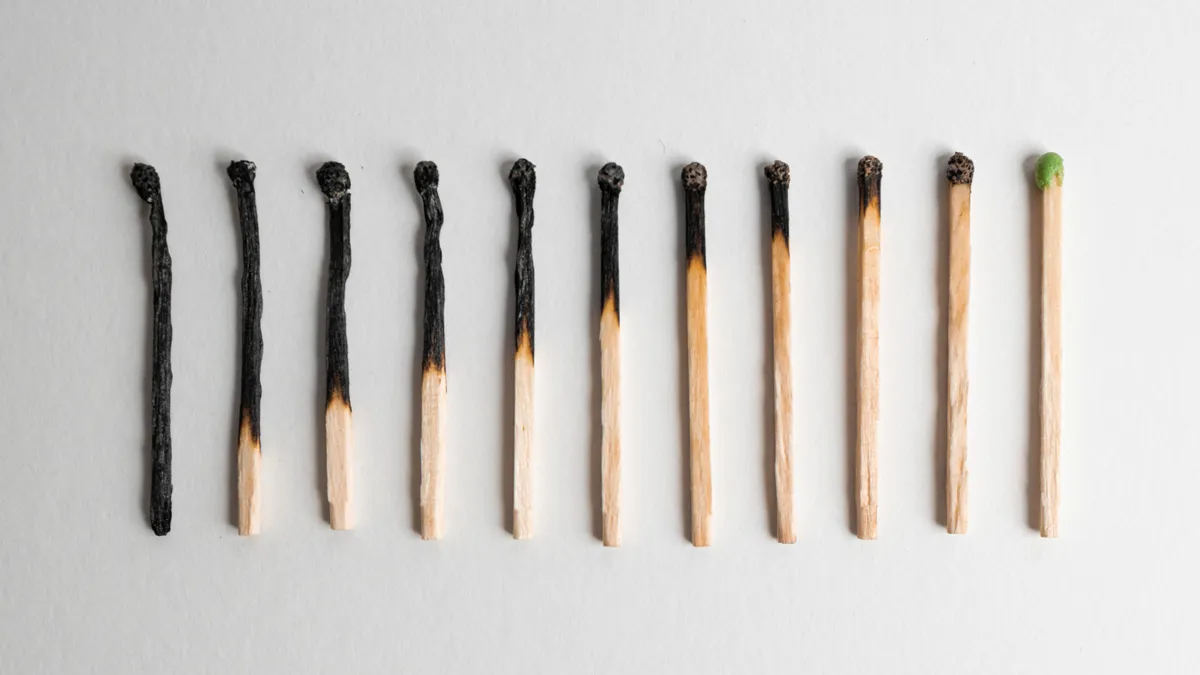In a world where workers are overwhelmed by emails and notifications — and decision fatigue persists — two organizational psychology experts offer a simplified way to communicate burnout.
Cindy Muir is a professor of management and organization at Notre Dame University’s Mendoza College of Business, and lead author of “Matches Measure: A Visual Scale of Job Burnout” to be published in the Journal of Applied Psychology. The graphic she offered in her paper is a six-point and eight-point spectrum of matches, from unlit, to singed, to burned, to disintegrated.
This visual image spectrum builds on the Wong-Baker FACES, used to communicate pain in the medical field.
“It makes assessing burnout as quick and easy as it gets — across countries even. It eliminates one of the reasons organizations fail to assess their employees regularly: time,” Muir said. “By using the Matches Measure, managers and organizations can better understand how prevalent job burnout is amongst their employees and how it fluctuates over time.”
Since spring 2020, burnout has been top of mind for HR managers. Talent dealing with the physical and mental stressors of the COVID-19 pandemic, racial trauma and tension following George Floyd’s death, and the 2020 election season have continually reported burnout to research firms.
Creating a more straightforward way to identify burnout’s extent may be a useful tool for talent professionals and HR managers.













